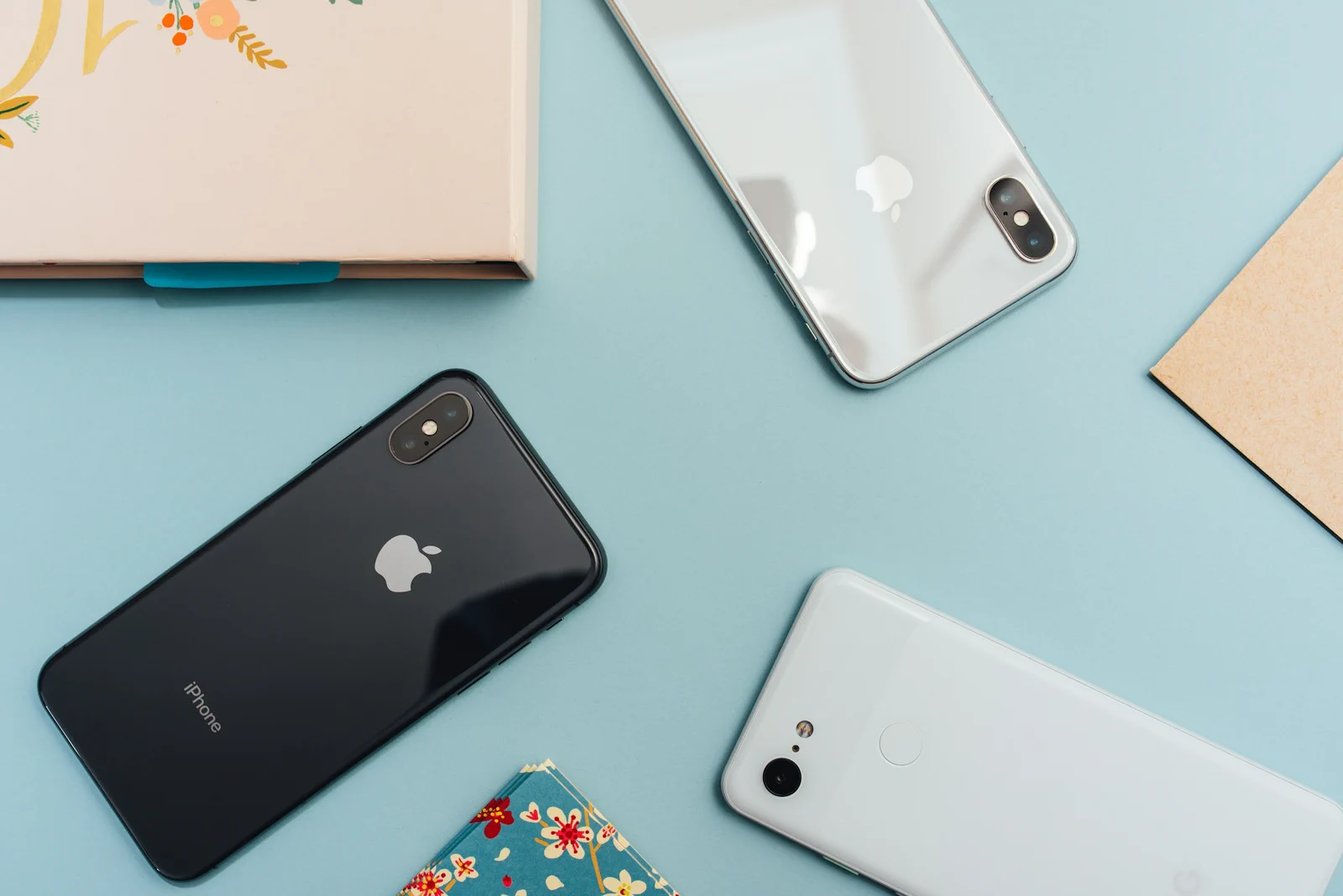iPhone 17 Pro for Business: Features That Actually Matter

Apple’s iPhone 17 Pro won’t officially launch until September 2025, but leaked specifications and industry patterns paint a compelling picture for enterprise buyers. With 12GB of RAM, a 50% increase over current models, Wi-Fi 7 support, and rumored vapor chamber cooling, the business case extends far beyond incremental updates.
Here’s what should catch your CFO’s attention: companies implementing iPhone programs report an average $300 to $1,300 annual benefit per employee, with device lifespans extending to 5-7 years compared to 3-4 years for Android alternatives. According to Kandji’s 2024 enterprise report, when 76% of large enterprises increased their Apple device usage in 2024, they weren’t following a trend, they were following the money.
Expected iPhone 17 Pro Announcement Timeline
Based on Apple’s consistent release patterns and supply chain reports, expect the iPhone 17 Pro announcement on Tuesday, September 9, 2025, with pre-orders beginning September 12 and general availability September 19. Enterprise customers with established Apple Business Manager accounts typically receive priority allocation, making early preparation essential.
The timing matters for budget planning in ways many IT departments overlook. Organizations operating on October fiscal years can include iPhone 17 Pro deployments in next year’s budgets, while calendar-year companies should begin allocation discussions now to ensure Q4 2025 rollout readiness. This alignment between Apple’s predictable release schedule and corporate planning cycles isn’t coincidental, Apple has deliberately synchronized with enterprise procurement patterns.
Rumored Features with Business Impact
The A19 Pro chip, built on TSMC’s N3P 3-nanometer process, promises more than raw speed. Early reports suggest 12GB of unified memory will finally match the RAM businesses expect for serious multitasking, while 40% faster on-device AI processing through enhanced Neural Engine capabilities transforms how businesses can deploy AI without cloud dependencies. The addition of vapor chamber cooling ensures sustained performance during video conferences and heavy workloads, addressing a critical pain point for mobile professionals.
For businesses, this hardware evolution translates to employees who can actually run Salesforce, Microsoft Teams, and analytics dashboards simultaneously without the dreaded iOS memory management forcing app refreshes. The frustration of losing form data or having to reload complex dashboards mid-meeting, a hidden productivity killer affecting millions of knowledge workers, may finally be ending.
Wi-Fi 7 support represents the most significant wireless upgrade in years, though its impact extends beyond simple speed improvements. With 46 Gbps theoretical maximum compared to Wi-Fi 6’s 9.6 Gbps, 320 MHz channel width support, and Multi-Link Operation for simultaneous band usage, the technology addresses enterprise density challenges. “Wi-Fi 7 isn’t just about speed,” notes network architect Robert Chen. “It’s about reliability in dense enterprise environments. When you have 500 employees in one building all on video calls, MLO’s ability to use multiple bands simultaneously eliminates the congestion that kills productivity.”
The camera system improvements, with all three rear cameras jumping to 48MP and the front camera reaching 24MP, might seem consumer-focused, but business applications abound. Higher resolution dramatically improves OCR accuracy for document scanning, enabling reliable text extraction from complex documents. Augmented reality applications gain precision measurements critical for construction and design workflows. Marketing teams can produce professional-grade content in-house without dedicated equipment. The improved low-light performance of the 24MP front camera transforms video conferencing quality in real-world conditions where perfect lighting isn’t available.
Security Enhancements for Enterprise
The iPhone 17 Pro’s rumored security improvements build on Apple’s already robust foundation through hardware-level protection that makes many attack vectors physically impossible. The enhanced Secure Enclave provides an isolated security coprocessor for biometric and encryption keys that remains protected even if the main processor is compromised. Hardware-verified boot ensures each boot stage is cryptographically verified, preventing rootkit installations. Memory encryption means all data remains encrypted even in RAM, protecting against sophisticated cold boot attacks.
According to Kandji’s report, 58% of organizations cite security as the primary benefit of Apple adoption, up from 48% in 2023. This isn’t just perception, the iPhone’s security architecture fundamentally differs from competitors. Where Android relies on software-based security that can be compromised, iPhone security features are burned into silicon, making them essentially unbreakable without physical device access.
While iOS 19 details remain limited, enterprise beta testing suggests focus areas that address current business pain points. Granular Apple Intelligence controls will allow corporations to prevent AI analysis of sensitive corporate data. Enhanced Declarative Device Management promises real-time configuration changes without waiting for device check-ins. Improved identity federation with Microsoft Entra ID acknowledges the reality of hybrid environments. Native zero-trust network access support eliminates the need for third-party ZTNA solutions.
Productivity Features Analysis
The 12GB RAM upgrade enables true multitasking capabilities that transform the iPhone from a communication device into a genuine productivity platform. Stage Manager, previously iPad-only, will reportedly come to iPhone, enabling desktop-class window management. Picture-in-picture for all video apps means professionals can reference materials during calls. Background app refresh without killing foreground apps eliminates the constant app reloading that interrupts workflow. Desktop-class browsing with multiple tab groups brings laptop functionality to mobile.
The real-world impact can’t be overstated. Sales representatives will be able to reference CRM data during client calls without dropping the call. Financial advisors can monitor markets while in video meetings without app switching. Project managers can actually manage projects on mobile, rather than just checking status. These aren’t incremental improvements, they’re fundamental capability expansions that redefine mobile productivity.
Battery and charging improvements address another critical business requirement. The rumored 35W fast charging delivers 0-50% charge in approximately 20 minutes, meaning arriving at the office with 20% battery isn’t a crisis, a coffee break provides enough charge for the morning. Improved battery chemistry promising 25% better longevity over charge cycles addresses the hidden cost of battery degradation. Machine learning-powered optimized charging profiles prevent the premature battery wear that forces early device replacement.
Cost-Benefit for Business Upgrades
The total cost of ownership calculation reveals why iPhone’s premium pricing often represents better value for enterprises. For a 100-employee deployment, iPhone 17 Pro at an estimated $1,099 per device totals $109,900 in hardware costs. Add $5,400 for three years of MDM licensing and $5,000 for support and training, bringing the three-year total to $120,300. Extended to five years with minimal additional support, the cost reaches just $ 125,700.
Compare this to a comparable Android flagship at $899 per device. While initial hardware costs are lower at $89,900, the same MDM licensing costs $5,400, and support and training typically require $8,000 due to greater device diversity. The critical difference emerges at year three, when Android devices typically require refresh, adding another $89,900. The five-year total reaches $198,600, making iPhone 17 Pro’s five-year TCO 37% lower despite higher upfront costs.
The productivity ROI calculations prove equally compelling. Based on aggregated enterprise data, smartphones used for work drive 34% productivity increases. Employees save an average of 1.2 hours weekly through mobile efficiency. Companies with device choice programs report 94% employee retention. At an average $50 per hour employee cost, the productivity gains alone justify the investment within 18 months.
BYOD vs Company-Owned Considerations
The BYOD market has exploded to $111.21 billion in 2024, projected to reach $ 276.39 billion by 2030 according to Mordor Intelligence’s BYOD Market Report. For iPhone 17 Pro specifically, the BYOD model offers zero hardware cost to companies while maintaining high employee satisfaction since 70% prefer choosing their own devices. Companies report $300 to $1,300 annual savings per employee through BYOD programs.
However, BYOD introduces complexity that many organizations underestimate. Security becomes more challenging when mixing personal and work data on the same device. Update adoption becomes inconsistent when users control their own devices. Privacy concerns arise when corporate MDM software monitors personal devices. The potential for productivity loss from personal distractions on work devices can offset efficiency gains.
Company-owned devices offer different advantages that increasingly appeal to security-conscious organizations. Complete security control enables enforcement of policies impossible on personal devices. Guaranteed update compliance ensures all devices run latest security patches. Simplified app deployment reduces IT complexity. Clear data ownership eliminates ambiguity during employee departures. Professional image consistency matters for customer-facing roles.
The Kandji report found 62% of enterprises use a hybrid approach, offering choice between BYOD with stipend or company-provided devices. This flexibility acknowledges that different roles have different needs, a software developer might prefer BYOD for customization, while a financial advisor handling sensitive data requires company-controlled devices.
Alternative Business Phone Options
While iPhone 17 Pro offers compelling advantages, alternatives deserve consideration. The Samsung Galaxy S25 Ultra brings unique capabilities including S Pen productivity for note-taking and signing, DeX desktop mode for emergency laptop replacement, and extensive customization options. However, its three-year average lifespan and fragmented update adoption create higher long-term costs. It works best for technical teams needing Android-specific tools.
Google’s Pixel 9 Pro offers the pure Android experience with excellent AI features and competitive pricing. Yet limited enterprise support and a smaller ecosystem make it suitable primarily for small businesses prioritizing cost over features. The iPhone 16 Pro, as the current generation, provides immediate availability with proven reliability at roughly $200 less than the anticipated iPhone 17 Pro price. The 8GB RAM limitation and Wi-Fi 6E connectivity may prove constraining for power users, making it best for companies needing deployment today rather than waiting for next-generation capabilities.
Key Takeaways
The iPhone 17 Pro represents more than an incremental upgrade, it’s a business tool designed for the reality of modern work. With 12GB RAM finally enabling true multitasking, Wi-Fi 7 eliminating connectivity bottlenecks, and security features that satisfy the most stringent compliance requirements, the business case writes itself.
IT leaders should begin budget discussions for Q4 2025 deployment immediately. Current MDM capabilities need evaluation for iOS 19 compatibility. Employee device preferences and needs assessment will inform deployment strategies. TCO calculations comparing five-year lifecycles will justify the investment. Identifying pilot program participants now enables smooth rollout when devices become available.
The enterprises achieving $300 to $1,300 annual benefits per employee aren’t lucky, they’re strategic. They understand that in a world where the smartphone is the primary computing device for many workers, investing in the best tools isn’t an expense, it’s a competitive advantage. The iPhone 17 Pro promises to extend that advantage significantly.
About the Author

Jessica Martinez
Business Technology Consultant
Business technology consultant specializing in digital transformation and enterprise mobility. Jessica helps organizations leverage technology to drive growth and operational efficiency.
